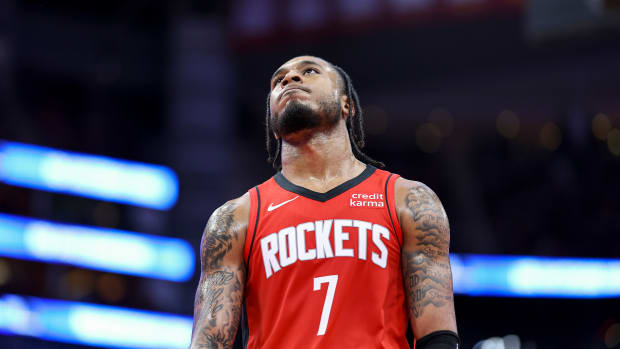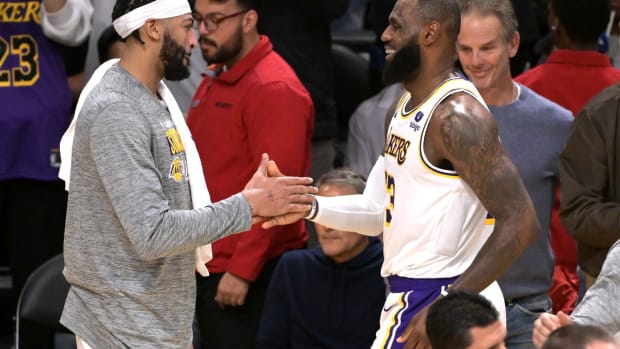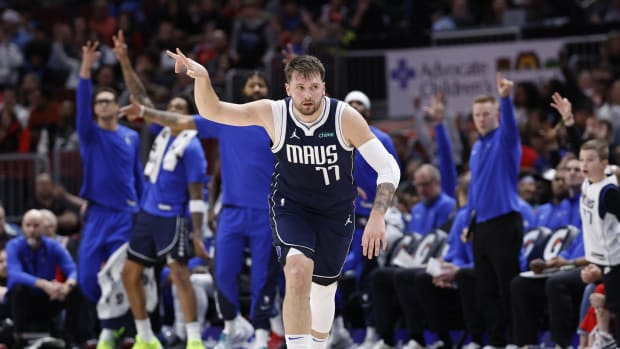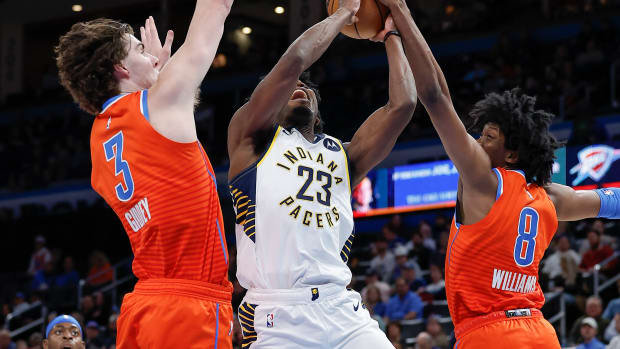Eight Important Questions Before the 2019 NBA Draft
You, NBA fan, might be buried by watching the playoffs every night, may not have watched a second of college basketball this season and may not know that draft night is less than two months away. We are here to inform you that, yes, the draft, June 20 is less than two months away, and that this is an increasingly relevant topic you may want to concern yourself with, even if your team has no draft picks, you’re a title-spoiled Warriors fan, or you’re complaining about postseason officiating to nobody in particular.
Anyway, if you have questions about the 2019 draft, below, you might find some answers.
Is there a chance anyone but Zion Williamson goes first overall?
While there’s always a chance, this one is relatively slim: Williamson, who has been the consensus top prospect dating back to roughly mid-November, has too many factors going for him not to be the selection at this point. You have almost certainly heard of him, so you probably already know that he just had one of the most dominant individual college seasons ever at Duke. His explosive athleticism, plus feel and instincts for making plays on both ends of the floor make up a set of strengths we’ve never quite seen to this particular degree. There isn’t a great argument for anyone else ahead of him, although Murray State point guard Ja Morant comes with a whole lot of upside, and Williamson’s Duke teammate R.J. Barrett was generally viewed as the draft’s top prospect coming into the season.
While there’s always the philosophical question of need versus prioritizing top talent, at this point, the optics of not taking Williamson first overall would be a negative for any rebuilding franchise. The team that could best rationalize passing on him would be the point guard-needy Suns (for whom Morant would be a perfect fit); conversely, Williamson’s simple presence on the floor will move tickets and generate the type of buzz no other player could create. He’ll arrive in the NBA with more built-in star power than any top pick in recent memory.
Is this a bad draft?
While it’s always tricky to slap a hard label on any draft class, we can call this one a definite maybe. Outside of Williamson, to a lesser extent Morant, and in the eyes of some, Barrett, there aren’t many prospects who inspire a ton of confidence among most NBA front offices. Teams are by and large down on the talent level this year, and while there are always prospects who slip in the draft, land in great situations and emerge as quality NBA players, it’s not a great year to be a rebuilding team hoping to take a swing on upside.
There’s some delineation as far as who’s likely to be drafted where, but the entire prospect spectrum feels more fluid than usual as teams begin to work players out in private and combine week approaches. The top-heavy nature of this class, with three or four solid options followed by a group of prospects who spark a wide variance of opinion, certainly raises the stakes when it comes to the draft lottery. It so happens that this is the first draft operating with the restructured lottery system, which creates more theoretical opportunity for teams to move into the top four (formerly top three) and shake things up. A lot is going to change over the next few weeks.
How do the new lottery odds work?
Lest we forget, the NBA has altered the structure of the draft lottery so that the teams with the three worst records have equivalent odds of winning, and each subsequent team has an incrementally better chance, as well. Previously, the team with the worst record had a 25% chance to win the lottery. Now, the three worst teams have a 14% chance. This structure is meant to help disincentivize tanking, and injects a new layer of randomness into the draft. In the new lottery’s maiden voyage, having Zion Williamson as the top prize will only add to the drama.
Below is how the order and odds of winning the No. 1 pick have shaped up after the NBA broke ties. In establishing the default order, Cleveland won a tiebreaker with Phoenix, New Orleans won a three-way tiebreaker with Memphis and then Dallas and Charlotte won a tiebreaker with Miami and then Sacramento.
New York (17–65): 14.0% of winning
Cleveland (19–63): 14.0%
Phoenix (19–63): 14.0%
Chicago (22–60): 12.5%
Atlanta (29–53): 10.5%
Washington (32–50): 9.0%
New Orleans (33–49): 6.0%
Memphis* (33–49): 6.0%
Dallas* (33–49): 6.0%
Minnesota (36–46): 3.0%
L.A. Lakers (37–45): 2.0%
Charlotte (39–43): 1.0%
Miami (39–43): 1.0%
Sacramento* (39–43): 1.0%
We’ll preview the lottery in full down the line, but in short, several teams’ selections will be at stake on draft night. If Memphis gets leapfrogged by a team jumping into the top four and ends up picking ninth or lower, that pick will convey to Boston. Unless Dallas jumps into the top four, its pick will convey to Atlanta. And Sacramento’s pick will go to Boston by default, unless it converts on its 1% chance of winning, in which case it goes to Philadelphia.
How has combine week changed?
The NBA continues to intelligently beef up the pre-draft process, and after centralizing the lottery and combine for the first time last year, the league has added another layer to the week, with the inaugural G League Elite Camp set to take place from May 12–14, leading into the lottery the night of May 14, followed by the draft combine May 15–19. The on-court portion of the combine, including measurements, athletic testing and scrimmaging, will be May 16 and 17. Players spend the rest of the time interviewing with teams and undergoing medical tests. Everything is located in Chicago.
The key thing to understand here is the function of the G League Elite Camp, which contains two segments. The first half of the three-day event showcases a group of the G League’s top players from this season in a scrimmage setting. The second part essentially serves as a second draft combine, inviting the next 40 draft-eligible prospects as voted on by teams for testing, scrimmaging and interviews. The top players at that event will earn invitations to the combine proper, which typically ends up including between 60 and 70 players. Invitations for both combines went out over the weekend. Like the combine, the Elite Camp will feature a mixture of attendees, with the split in experience expected to slightly favor underclassmen.
Overall, the Elite Camp gives teams and players another crucial measuring stick with which to make informed decisions. For example, if you’re a freshman who didn’t make the combine and who then struggles at this event, it’s probably a sign that returning to college would be prudent. Undecided prospects only have about a month to figure things out, and when factoring in travel and the combine itself, it’s not enough time to get acquainted with every team and turn over every stone. There are always unintended consequences with things like this, but it seems beefing up teams’ opportunities to watch players scrimmage and creating more chances for those fringe guys to perform should only help.
Can a player go undrafted and still return to school?
No, they can’t. A proposed rule change in an August NCAA memo stated that, pending NBA and NBPA approval, players who attend the combine and then went undrafted would be able to retain their college eligibility. That rule has not been approved, and so it has not yet gone into effect. Despite some confusion, the NCAA’s 2019 withdrawal deadline remains May 29, which is 10 days after the official conclusion of the combine. While this change could still happen in the future, it is not yet effective.
But underclassmen can hire agents now, right?
Yes, a majority of draft-eligible underclassmen have hired NBPA certified agents to guide them through the pre-draft process. Those who choose to return to college can maintain their amateur status by cutting ties before the May 29 deadline. The relationships have to be disclosed to the NCAA, and agents are allowed to help finance the pre-draft process.
If anything, the impact here is positive: under the old rules, agents were unofficially advising these prospects anyway, and at least there’s an element of transparency. The change should facilitate players having a better understanding of what they’re getting into, and in theory, help them make more informed choices. While agents are driven by self-interest (which, in some cases, is not always their players’ best interest), it’s helpful for prospects to have representation when it comes to securing pre-draft workouts and deciding whether to turn pro.
Who are the international prospects I need to know about?
There’s a decided lack of buzz surrounding this year’s international class, and it’s not exactly a Luka Doncic hangover, either. As it stands, we only project two first-round picks coming from leagues overseas. French forward Sekou Doumbouya and Georgian center Goga Bitadze could both be lottery picks and are quality prospects in their own right, but after that, the picture is a bit murkier.
Doumbouya has been hyped dating back to the 2018 Basketball Without Borders Global Camp, where he was the top prospect in attendance. He is the youngest prospect likely to be drafted and won’t turn 19 until December, and put together a respectable first season playing Pro A in France. He’s an NBA-caliber athlete with a projectable body type, and continues to develop into what scouts hope will be a versatile, modern power forward. Doumbouya will be a project for whoever drafts him, but noting the underwhelming nature of the lottery prospects, he could hear his name called early.
Bitadze has probably been underhyped on some level after an extremely impressive year as a 19-year-old, playing real, productive Euroleague minutes and dominating the Adriatic League. As such, he’s a very good bet for the first round (there were teams trying to keep him in the draft last year), and a player internationally-minded teams will covet. The 6’11” center is more athletic than he’s given credit for, shot 62.3% across competitions, and posted a stellar PER of 23.36 and averaging 12.0 points, 6.3 rebounds and 2.3 blocks in 13 Euroleague games—no small feat for a player of any age. While the bar is certainly high right now for centers hoping to stick in the NBA, Bitadze is the type of established talent that teams tend to prioritize.
One key set of dates to remember: the NBA’s Global Camp will be held from May 30–June 2 in Monaco and feature the top 40 international draft-eligible prospects, serving as something of an overseas combine that also showcases top 18-and-under prospects for future drafts. The pool of players has not yet been announced.
What else do I need to know?
For full breakdowns of the Top 100 draft-eligible prospects, the Front Office Big Board offers a comprehensive look at the player pool. For the latest intel and a hypothetical look at the draft, keep tabs on our mock draft. There will be much more in this space in the coming weeks as the process gets rolling.



































